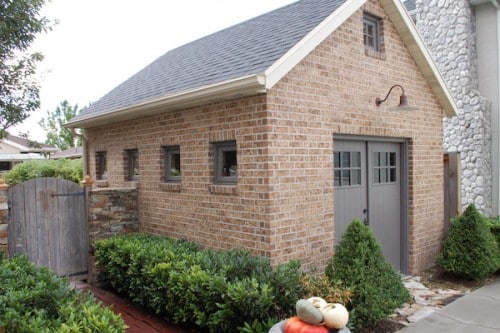Springtime is a season where most gardeners actively prepare for the summer and fall harvest. De-cluttering the flower beds and organizing seeds, planting vegetable starts and getting any last minute bulbs for summer blooms into the ground is an important part of the season. Every gardner knows that having a dedicated space for organizing tools, seeds, and starts is a great way to really get a handle on the backyard. And, if they’re lucky, the garden shed will also be a beautiful addition to their outdoor space allowing for summer garden parties and Winter’s motivation.
Whether building a shed or improving an old one, here are some ideas for making a shed a useful part of your backyard:
Identify a theme. If you are hoping to create country or cottage charm than really focus on making your garden shed match its surroundings. Scalloped details around the windows and doors create an old world folksy atmosphere that is complimented by tall, vibrant flowers. A rustic potting shed can be made out of any recycled lumber and can have a stone path that leads directly through it. Your garden shed doesn’t have to be closed off from the outdoors.
Regardless of your style, try to use recycled materials. Old gothic windows add antique charm, while creating warmth and light. Beautiful old molding can be added to the front of your shed to create interest. Spirals, lattice, you name it, will give your shed a look of its own.
If you want to go green, create a living roof by placing succulents on top of your garden shed. This will keep the shed nice and cool while soaking up any excess rainwater. It’s also a unique look that will add another dimension to your garden’s landscape. You can also use different kinds of sod if you prefer grass to succulents.
Make it easy on yourself. You don’t have to make a fancy two-story indoor/outdoor garden shed. Today you can order a pre-fabricated garden shed that you can put up by yourself in just a couple of hours. There’s no need to get fancy, unless that’s what you want. You can even build a potting shed out of latticework and plant vines to create the walls. There’s no telling what you can do. Follow your muse wherever it calls. If you want to incorporate stone work into the structure, think about raising it up and using the natural stone as a foundation for your shed.
Avery Lane is a freelance writer from the Pacific Northwest. She writes about a wide variety of home improvement topics, including guides to roofing prices and central air conditioner prices.
















